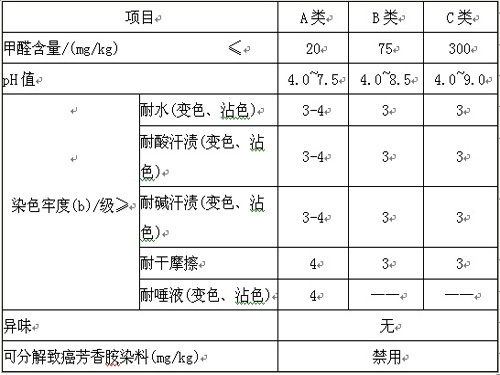Each type of textile product has relative national standards and related standards, but GB18401-2010 "National Basic Safety Technical Specification for Textile Products" and GB/T29862-2013 "Identification of Textile Fiber Content" are basically related to textile standards. . Many people think that the international standard for clothing testing is very long and cumbersome, which in turn creates a resistance to it. In fact, although the standard is long but it is easy to read, it is easy to interpret the cover of these two national standards. . Polyester Fleece Fabric,Polyester Fleece Sherpa Lamb,Polyester Fleece Fabric Indian,Polyester Fleece Jacket Shaoxing Winfar Knitting & Embroidery Co.,Ltd. , https://www.wfknitting.com
3 read GB18401-2010 "National Safety Technical Code for Textile Products"
I. The entire technical content of this standard is mandatory
The scope of application of this standard: Applicable to the production, sales and use in China's taking and decorative textile products.
Second, the test result category
Class A: Products forbabies
Textile products worn or used by infants and young children aged 36 months or less.
Class B: Products with direct contact to skin
When it is worn or used, most of the area of ​​the product is in direct contact with human skin.
Category C: products without outbound contact to skin
When worn or used, the product is not directly in contact with human skin, or only a small portion of the textile product is directly in contact with human skin.
The table will be more clear and intuitive:
Third, test items:
2 mastered GB/T29862-2013 "Identification of Textile Fiber Content"
First, the durability label:
It is always attached to the product and can withstand the maintenance procedures in the product's instructions for use, keeping it legible and legible.
Second, fiber content tolerance:
1. When a product or a part of a product consists entirely of a fiber, the content of the fiber is indicated by "100%", "pure" or "full", and the fiber content tolerance is 0. Products containing traces of other fibers.
2. A certain part of a product or product contains “100%†when it can be judged to be a decorative or characteristic fiber (eg, elastic fiber, metal fiber, etc.) and its total content is ≤ 5% (wool woollen product ≤ 7%). , "Pure" or "Full" indicates the fiber content, and states that "except XX fiber", the indicated fiber content tolerance is 0.
3. When a certain part of a product or product contains two or more fibers, the tolerance for each type of fiber indicated on the label is 5%, and the fiber content of the filler is 10%, except for the fibers not permitted by this standard. .
4. When the fiber content of a filler on the label is ≤ 20%, the fiber content tolerance is 5%; when the filler fiber content is ≤ 5%, the actual content must not be zero.
5. When the fiber content of a product or the total amount of two or more fibers is ≤ 0.5%, the total amount may not be counted. If applicable, it may be marked as "with trace xx" or "with traces of other fibers."
It is more intuitive and easier to interpret trivial standards through the 3+2 model. Only by understanding the standards can standards be applied, can standards be used to safeguard their rights and interests.